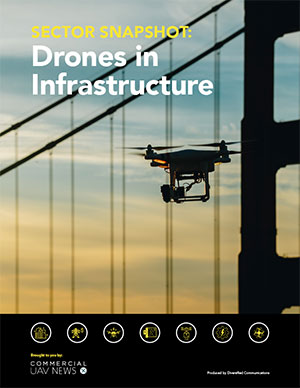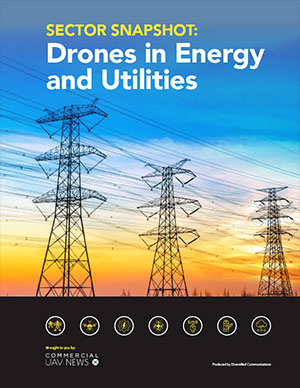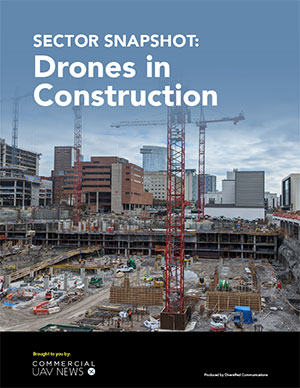At this year’s Commercial UAV Expo, one of the most notable new – or perhaps more accurately, returning – features was the Indoor Airspace area in which organizations and companies were able to showcase real-world demonstrations right on the exhibit hall floor. This comes after years of outdoor demonstrations, giving easier access to these demonstrations with some of the smaller drones on the floor. (Except, of course, the massive release from AIBOT that took place in this area.)
There were demonstrations taking place in this netted area throughout the week, and staff from Commercial UAV News were able to stop by for a handful of these demonstrations to get a feel for how things went. For the most part, these demonstrations included both presentations explaining what the crowd was about to see, as well as actual flying for the crowd to see.
National Institute of Standards and Technology
A highlight in the Indoor Airspace demonstration area was a presentation and live demo from the National Institute of Standards and Technology (NIST) Engineering Laboratory, showcasing their Open Test Lane and Scenarios testing. These standardized test lanes are designed to evaluate a pilot’s ability to identify objects from safe altitudes in open environments, with scalability that allows aircraft of all sizes to demonstrate control and accuracy.
The smallest lane fits neatly inside a basketball or tennis court (or in this case, the Indoor Airspace Demo Area), giving novice pilots a safe way to practice without entering the national airspace. During the demo, a NIST trainer stood outside the cage watching a POV livestream from the drone and providing real-time instructions as the pilot navigated the course. In addition to the “lane” style test, the team also showcased scenario-based evaluations, such as having a drone investigate a mock crime scene—hovering at a safe distance to locate both a “body” and a discarded weapon.
By creating repeatable, measurable benchmarks for performance, these tests not only help pilots build skills in a controlled environment but also establish a common foundation for safety, proficiency, and professionalism across the drone industry.
Voliro
Last year, Commercial UAV News reported on the Voliro T Version 5, a new version of the Switzerland-based company’s first-generation aerial robotic platform for performing contact-based inspections and maintenance tasks at height.

That article touted the non-destructive testing (NDT) drone’s omnidirectional flight capabilities and tiltable rotors. It also described how new enhancements enable the platform to perform precise and stable inspections in complex industrial environments.
At Commercial UAV Expo 2025, attendees got the chance to see the Voliro T in action as the company showcased the platform with a live flying demonstration held in the Indoor Airspace Demonstration Area on the Exhibitor Hall floor. As a Voliro pilot put the drone through its paces, a company representative discussed the Voliro T’s 360° orientation and full-surface coverage abilities, its 10-12 minute flight time, its pulse eddy current instrument for advanced NDT inspections, and more.
CHC Navigation
During their 30-minute presentation, the CHC Navigation team showed off their x500 UAV, specifically showcasing its ease of use. With the added pressure of doing so in front of a live audience, representatives demonstrated how they are able to quickly set up the drone for their purposes, including attaching payloads and getting ready to fly. The X500 includes triple redundant IMUs, dual redundant GNSS, and flight control systems to ensure enhanced safety and functionality.
Much of the presentation focused on the variety of users who can utilize this drone, with use for industries like inspection, surveying, public safety, emergency response, and more. This comes down to the adaptability of the UAV along with the aforementioned user interface. They also noted it is capable of operations in temperatures from -5 to 122 degrees Fahrenheit, adding more versatility for this drone. While they were not able to actually get the drone inside the cage to fly, attendees were able to see the setup in person and get plenty of information about how the X500 could potentially assist in their workflow.
















Comments